Is an original active cooler necessary for the Raspberry Pi 5? We tested how the temperature changes with and without the cooler

The shipment of '
Raspberry Pi 5 – Raspberry Pi
https://www.raspberrypi.com/products/raspberry-pi-5/
Preface to Technical Approval
The Raspberry Pi 5 used this time was sent directly to the GIGAZINE editorial department by the Raspberry Pi Foundation and has not been certified as conforming to technical standards. Therefore, we are filing a notice under the ' Special System for Experiments Using Uncertified Equipment .' In Japan, the Raspberry Pi 5 will be released after the agency applies for certification, so general users do not need to worry about the certification.

◆Check heat generation when genuine cooler is installed
The Raspberry Pi Foundation provides the Raspberry Pi 5 with an official cooler, the Raspberry Pi Active Cooler. The official cooler can be installed without tools and can cool the SoC, power management chip, and wireless management chip. The following article provides detailed information about the appearance of the Raspberry Pi Active Cooler, installation procedures, and interference with the HAT when installed.

The original cooler has three thermal pads on the back to cool the radio management chip, SoC, and power management chip.
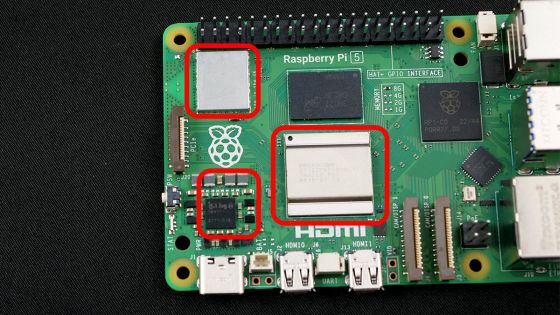
Below is the temperature change when the Raspberry Pi 5 was equipped with the original cooler and left in an idle room at 25 degrees. The blue line shows the CPU temperature, the orange line shows the RP1 (I/O management chip) temperature, and the red line shows the fan speed. The CPU temperature fluctuates between 45 and 50 degrees.

I tried to measure the temperature of the exterior when it was idle with an infrared thermography. Because the surface of the cooler is shiny and not suitable for measuring the temperature with a thermography, I stuck black vinyl tape on it to measure the temperature.
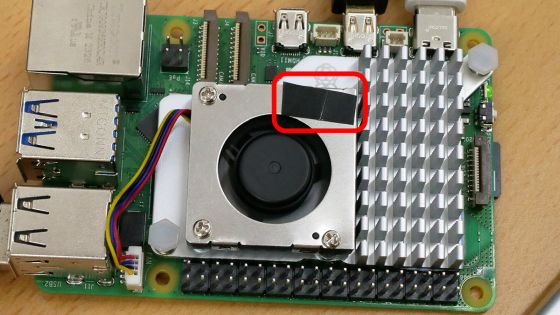
The surface of the cooler is 37.1 degrees.

The temperature around the power management chip was 55.4 degrees.

Next, we installed the software 'stress' that puts a load on the system, and ran the command 'stress -c 4' to use all CPU cores at 100% to measure the temperature. When checking the system status at the time of measurement with 'htop', it looks like this.
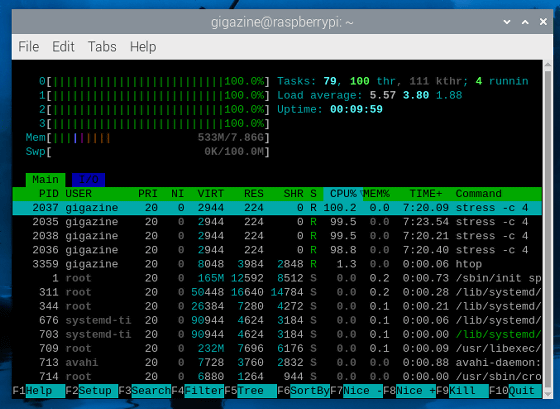
The temperature and fan speed trends are as follows. The CPU temperature fluctuated around 60 degrees.
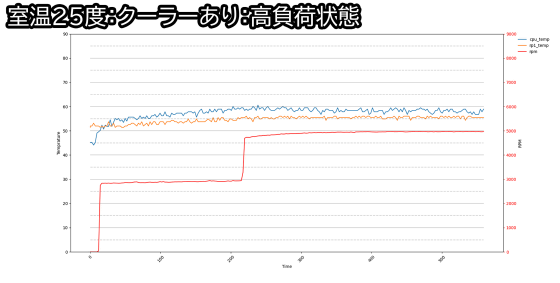
The temperature of the cooler surface is not rising.

The temperature around the power management chip rose to 59.6°C.

◆ Check for heat generation when the original cooler is not installed
Next, remove the original cooler and check the temperature change.
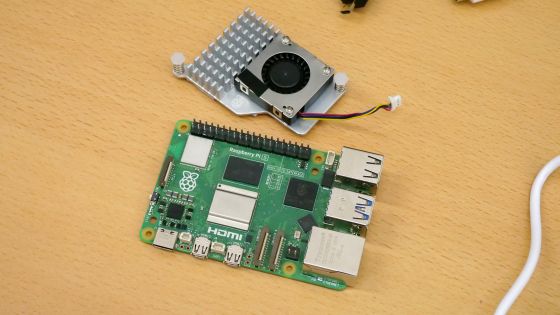
The idle temperature is as follows: With the cooler installed, the CPU temperature fluctuated between 45 and 50 degrees, but without the cooler it exceeded 60 degrees.
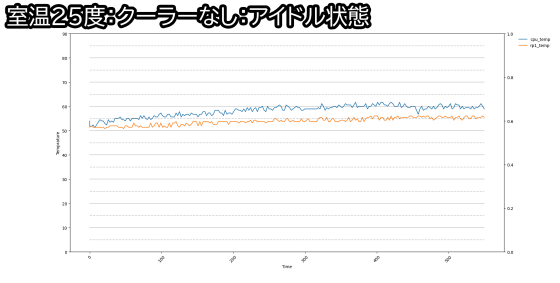
Next, we measured the temperature using an infrared thermograph. To make it easier to measure the temperature, we attached black vinyl tape to the surface of the SoC and the wireless management chip.
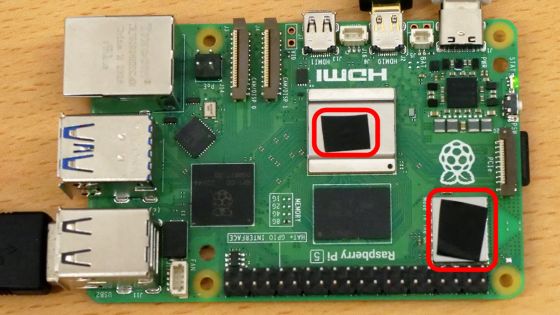
The surface of the SoC is 64.0 degrees.

The surface of the wireless management chip is 54.5 degrees.

The surface of the power management chip was 63.4 degrees.

Next, below is a graph that records the temperature change under high load by running 'stress -c 4'. The CPU temperature exceeded 80 degrees about 100 seconds after the load started, and then fluctuated around 85 degrees. According to
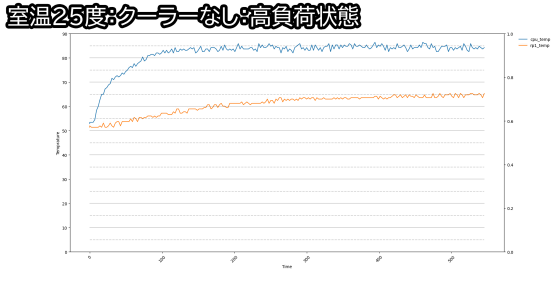
The temperature of the SoC surface is 85.1 degrees.

The surface of the wireless management chip is 65.9 degrees.

The surface of the power management chip was 78.1 degrees.

Bonus
The rotation speed of the Raspberry Pi 5's original active cooler is basically controlled automatically, but you can specify the rotation speed by rewriting the values in the following file.
[code]/sys/devices/platform/cooling_fan/hwmon/hwmon2/pwm1[/code]
For example, the following command will set the fan speed to about 8000 rpm. However, please note that this command may be unstable, as it may automatically revert to the original speed even if you specify a speed, or you may be able to fix the speed by repeatedly pressing the speed command. Use this command at your own risk.
[code]echo 250 > /sys/devices/platform/cooling_fan/hwmon/hwmon2/pwm1[/code]
◆ Forum is currently open
GIGAZINE's official Discord server has a forum related to Raspberry Pi 5. Anyone can post at the link below, so please feel free to post anything you're interested in.
• Discord | 'The Raspberry Pi 5 has arrived at the GIGAZINE editorial department, so we're going to review it, but what do you want to know?' | GIGAZINE
https://discord.com/channels/1037961069903216680/1166304963497041981

Related Posts:






